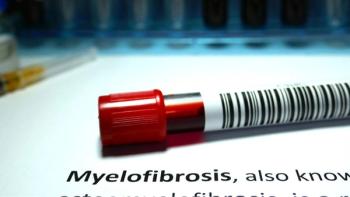
Many Teen Cancer Survivors Are Well Adjusted, But Better Screening Is Needed
While most survivors of childhood cancers are well adjusted, a recent study revealed that more testing is needed for psychosocial late effects in certain groups.
Most survivors of childhood cancer are doing just fine, psychosocially, but results from a recent study may help identify those who will end up developing psychosocial issues later on.
A study conducted at St. Jude Children’s Research Hospital revealed that those who have psychosocial symptoms after cancer treatment can be grouped together by the type of treatment they received or the late effects they experienced.
The study, which was published in The Journal of Clinical Oncology, gathered parent-reported data from the Childhood Cancer Survivor Study (CCSS) of 3,893 five-year survivors of childhood cancer who were treated as adolescents between 1970 and 1999. Researchers looked at four symptom profiles: no significant symptoms; elevated anxiety and/or depression, social withdrawal and attention problems (internalizing); elevated headstrong behavior and attention problems (externalizing); and elevated internalizing and externalizing symptoms (global symptoms).
Though many patients showed no significant increase in psychosocial effects at all, 31 percent of survivors who were treated with cranial radiation therapy (CRT) reported symptoms of depression, social withdrawal, peer conflict and attention problems, compared with just 16 percent of survivors who had other treatments. But when looking at the non-CRT group, about 9 percent had increased comorbid symptoms of headstrong behavior and attention problems. This profile was not seen in the CRT group.
“Because we know that groups with cranial radiation therapy tend to have worse outcomes, we wanted to look at them separately,” said Tara M. Brinkman, corresponding author on the study and member of the St. Jude Department of Epidemiology and Cancer Control, in an interview with CURE. “With respect to treatment exposure, what we saw was not really surprising with the symptom clusters.”
Physical late effects also showed a strong correlation to emotional effects. Survivors who were overweight or obese were nearly twice as likely to have internalizing or global symptoms when compared with those who were normal weight. This led authors on the study to express concern as there is a high prevalence of obesity among childhood cancer survivors.
“This supported what we tend to see clinically,” Brinkman said. “As these survivors come further out from their diagnosis, it’s less about the cancer exposure that affects their psychosocial status, but the late effects and the physical effects that affect their psychosocial functioning.”
The prevalence of survivors with sensory impairment, which can be caused by platinum-based therapies and/or CRT, who also had internalizing symptoms was more than twice as likely than for them to be well-adjusted. Survivors who had scarring or disfigurement had increased odds of experiencing externalizing symptoms. Cancer-related pain was also increased with being more likely to experience internalizing symptoms.
Co-occurring symptoms like these tend to be rule, rather than the exception, Brinkman explained, and the behavioral, emotional and social symptoms all clustered together as well.
“We didn’t see any single-symptom classes. That has significant implications,” Brinkman said.
Brinkman said she hopes these findings will improve the psychological screening and treatment for survivors of childhood cancers.
“What we know about mental health symptoms is that if they [go] untreated, they persist and get worse,” she said. “We need to enhance our screening efforts and figure out what profiled these survivors fit and what the best way to treat them is.”




